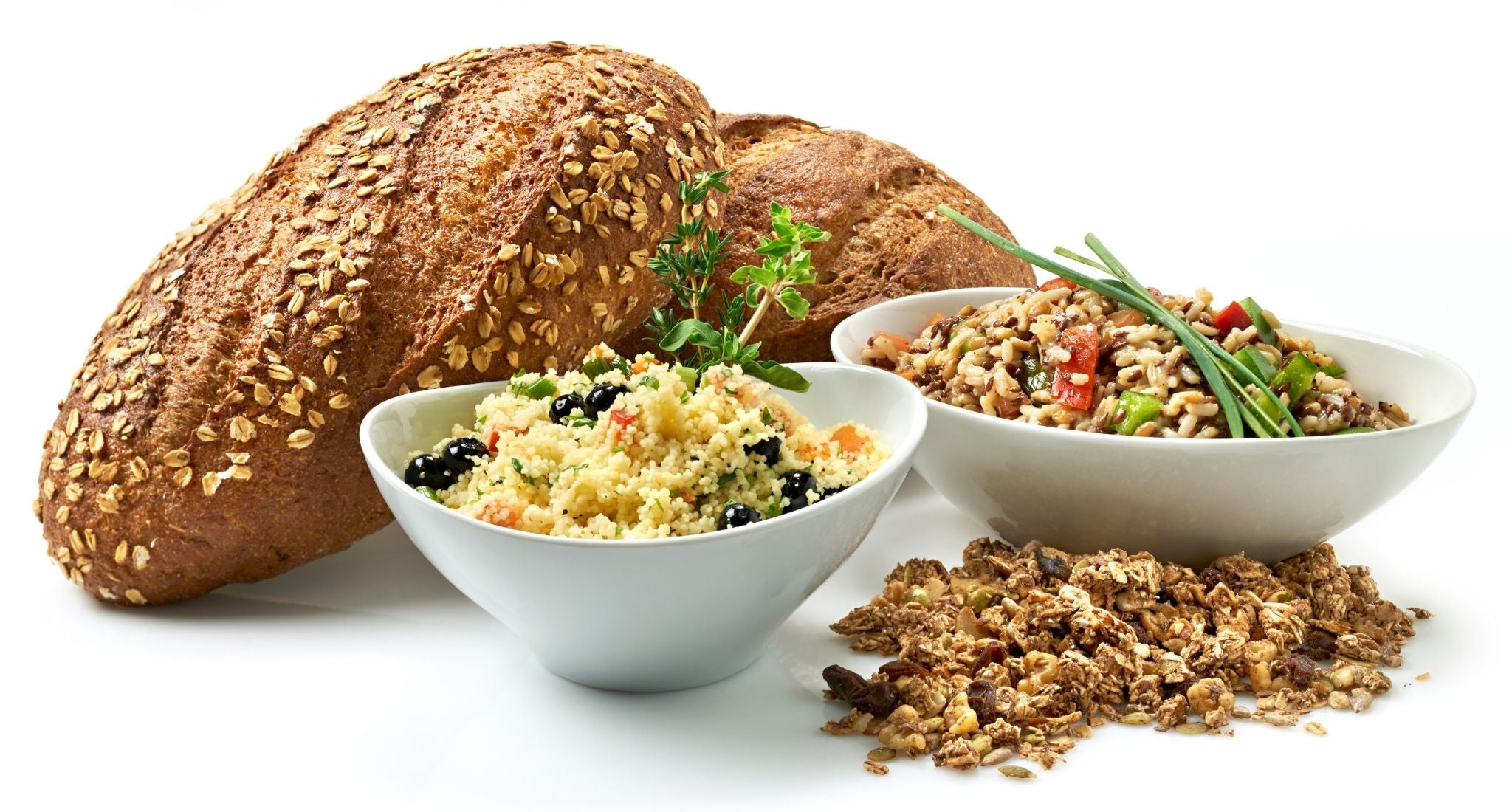You go to the supermarket for some rice, pasta and bread. What do you buy then? The whole wheat version or not? Do you pay attention to that? Maybe you should, because whole grain products help you to be in balance.
What does whole grains mean?
When it comes to whole grain, it's always about grains. Grains are edible and nutritious seeds from the grass family: wheat, barley, rye, oats, rice, millet and maize. A grain consists of a flour core, germ and bran. Simply put: the inside, the seed from which a new plant can grow and the shell. The flour core mainly consists of proteins and carbohydrates. The fibres, vitamins and minerals are in the peel and the germ.
In whole grain products, the whole seed is used. Or has it been ensured that the product has an equivalent composition. In products that are not whole grain, the germ and bran have been partially or completely removed. They don't just do that. As a result, products have a longer shelf life, but are therefore less nutritious.
The sugar level
The blood sugar level is the amount of glucose in the blood at any given time. Glucose is a form of sugar and therefore a carbohydrate. Why is it important to know this? Because you feel most comfortable when your blood sugar is in balance. You can influence this by thinking about what you eat and drink.
Whole grain products contain a lot of fiber. Fibers are also carbohydrates. However, they take care of your body when you don't suddenly convert a lot of sugar into blood sugar. And so that important balance is disturbed. When this does happen, for example, you can feel the well-known after-dinner dip. Or you experience binge eating, bloating, constipation and abdominal pain.
Examples of whole grain products are:
- Whole grain bread
- Whole-weat pasta
- Brown rice
- Whole wheat couscous
- Bulgarian
- Quinoa
- Rye bread
Whole grain benefits
There are even more reasons to choose whole grain products. They contain all kinds of B vitamins and minerals such as iodine and iron. Again thanks to the fibers. If you're in the supermarket again for the choice between a whole-wheat and non-whole-wheat product, remember the following benefits.
Helps you not to overeat
When you eat whole grain products you are full longer. Some fibers hold a lot of water. So they literally fill your intestines, making you feel full. If you also drink enough, you will feel satiated for a long time and will not have the urge to snack so quickly after a meal.
Keep gut healthy
Thanks to the fiber, the risk of colon cancer is reduced by 10%. Fiber stimulates your intestines to do their job properly. Because your intestines are put to work, you have a healthy and smooth bowel movement sooner. People who have too little fiber can suffer from irregular and unpleasant bowel movements.
In addition, with fiber, fermentation takes place in the large intestine. The fatty acids that arise from this have an anti-inflammatory effect.
Less chance of type 2 diabetes
Type 2 diabetes is the most common form of diabetes. Too much sugar enters the blood and that can have all kinds of nasty consequences. A healthy life with a balanced blood sugar level prevents this.
After eating a lot of white bread, a lot of sugar also enters the blood. Sometimes that's not a bad thing. And sometimes even useful, for example after exercise. So you don't always have to choose whole grain products. As with anything, you can maintain a healthy balance.
Protection against cardiovascular disease
Eating whole grain products reduces the risk of cardiovascular disease by 25%. A single slice of bread is not enough. You will have to consume 25 grams of fiber or more every day (on average).
Eating fiber also has a positive effect on blood pressure. Something you really want to keep at a good level.
Whole grain bread
Of all whole-grain products, we quickly think of a bread. A product that is in the shopping cart of many people every week. The choice for a wholemeal bread seems easy: the dark brown one, right? But unfortunately not every brown bread is a whole wheat bread.
Always look at the ingredients in the store. See if it says whole wheat flour. Or ask the baker. There are breads to which dye is added. The browner, the healthier. That's what they want us to think. And with other products that say 'whole grain' on the label, always check the amount of fiber.
All this also applies to spelled bread. Both wheat and spelled are grains. And like wheat, spelled can be either whole grain or non-whole grain.



